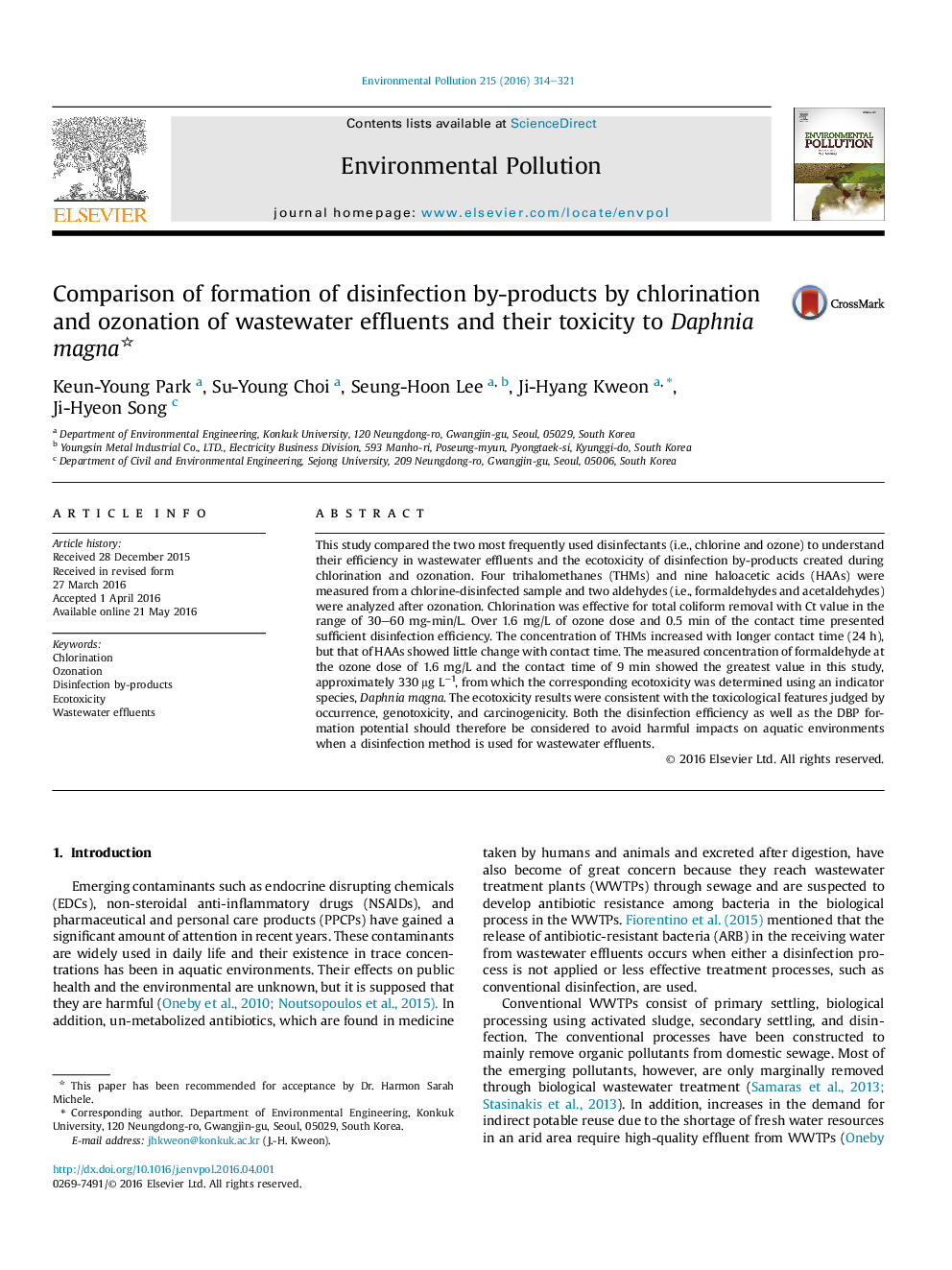| کد مقاله | کد نشریه | سال انتشار | مقاله انگلیسی | نسخه تمام متن |
|---|---|---|---|---|
| 6316105 | 1619158 | 2016 | 8 صفحه PDF | دانلود رایگان |
عنوان انگلیسی مقاله ISI
Comparison of formation of disinfection by-products by chlorination and ozonation of wastewater effluents and their toxicity to Daphnia magna
دانلود مقاله + سفارش ترجمه
دانلود مقاله ISI انگلیسی
رایگان برای ایرانیان
کلمات کلیدی
موضوعات مرتبط
علوم زیستی و بیوفناوری
علوم محیط زیست
شیمی زیست محیطی
پیش نمایش صفحه اول مقاله

چکیده انگلیسی
This study compared the two most frequently used disinfectants (i.e., chlorine and ozone) to understand their efficiency in wastewater effluents and the ecotoxicity of disinfection by-products created during chlorination and ozonation. Four trihalomethanes (THMs) and nine haloacetic acids (HAAs) were measured from a chlorine-disinfected sample and two aldehydes (i.e., formaldehydes and acetaldehydes) were analyzed after ozonation. Chlorination was effective for total coliform removal with Ct value in the range of 30-60 mg-min/L. Over 1.6 mg/L of ozone dose and 0.5 min of the contact time presented sufficient disinfection efficiency. The concentration of THMs increased with longer contact time (24 h), but that of HAAs showed little change with contact time. The measured concentration of formaldehyde at the ozone dose of 1.6 mg/L and the contact time of 9 min showed the greatest value in this study, approximately 330 μg Lâ1, from which the corresponding ecotoxicity was determined using an indicator species, Daphnia magna. The ecotoxicity results were consistent with the toxicological features judged by occurrence, genotoxicity, and carcinogenicity. Both the disinfection efficiency as well as the DBP formation potential should therefore be considered to avoid harmful impacts on aquatic environments when a disinfection method is used for wastewater effluents.
ناشر
Database: Elsevier - ScienceDirect (ساینس دایرکت)
Journal: Environmental Pollution - Volume 215, August 2016, Pages 314-321
Journal: Environmental Pollution - Volume 215, August 2016, Pages 314-321
نویسندگان
Keun-Young Park, Su-Young Choi, Seung-Hoon Lee, Ji-Hyang Kweon, Ji-Hyeon Song,